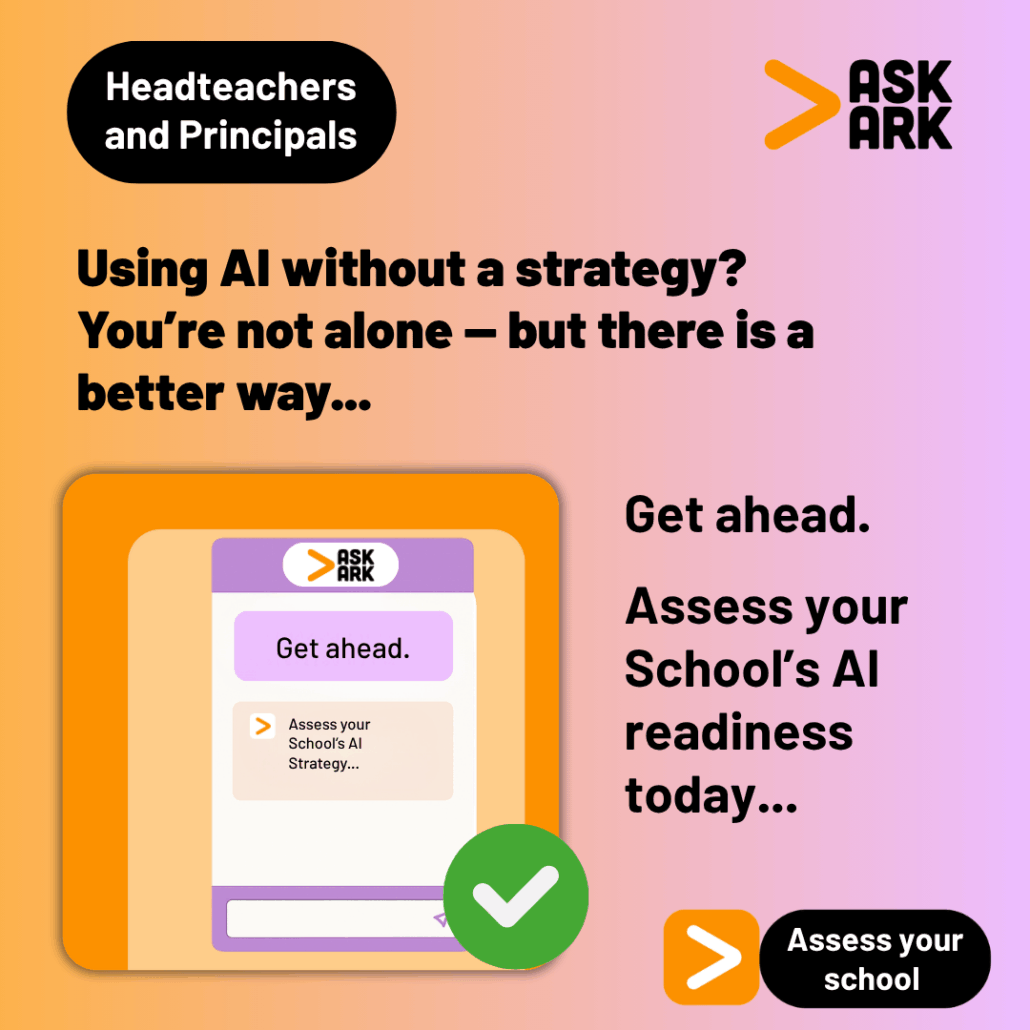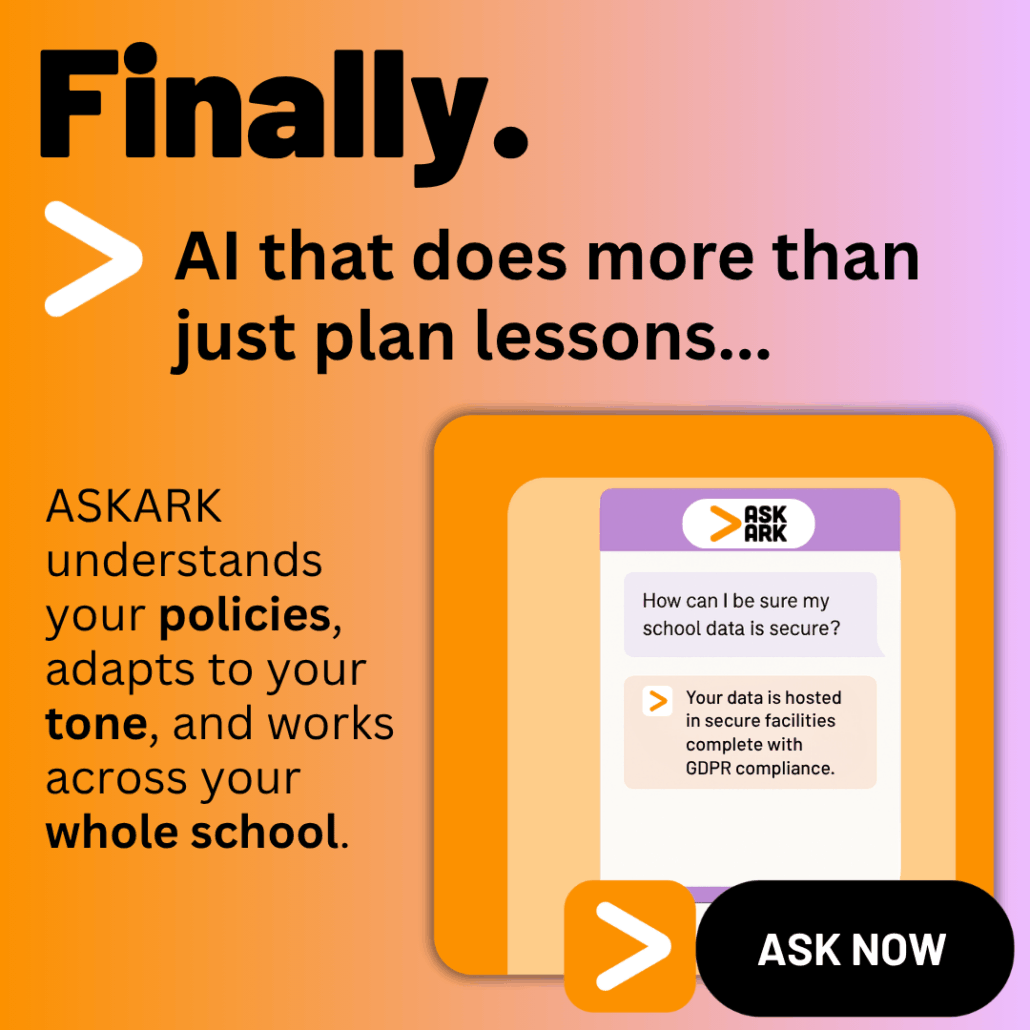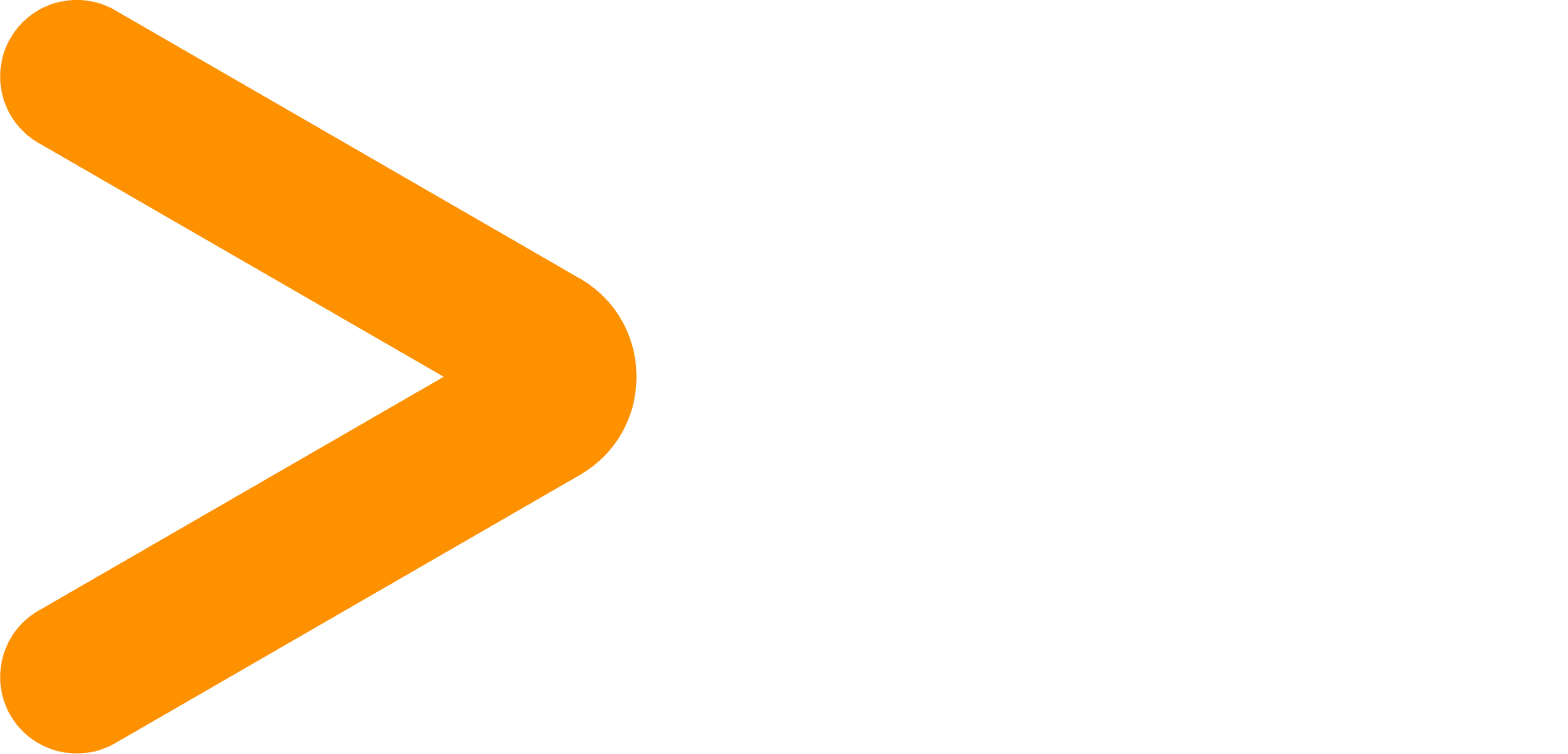How strategic human oversight transforms AI from a risk into a powerful amplifier of educational expertise
Artificial intelligence is transforming how we work, learn, and create. Yet amidst the excitement about AI’s capabilities, one crucial element often gets overlooked: the irreplaceable value of human judgement. Whilst AI can process information at unprecedented speed and scale, it’s the human touch that transforms raw AI output into trusted, accurate, and contextually appropriate results.
The 10-80-10 framework represents a strategic approach to AI implementation that maximises both efficiency and safety. This methodology ensures that AI serves as a powerful amplifier of human expertise rather than a replacement for critical thinking.
Understanding the 10-80-10 Framework
The First 10%: Context and Intent Setting
The opening phase of any AI-assisted task is entirely human-driven. This crucial 10% involves:
Defining Clear Objectives Before engaging any AI system, humans must establish:
- What specific outcome is needed
- Who the intended audience is
- What quality standards must be met
- Which constraints and requirements apply
Contextual Framing AI systems lack real-world understanding. Humans provide the essential context that includes:
- School values and culture
- Regulatory requirements (like GDPR compliance)
- Professional standards and ethics
- Stakeholder sensitivities
Strategic Prompt Design As emphasised in the Department for Education’s guidance, “high-quality, detailed prompts can lead to higher-quality and more useful outputs.” This involves:
- Providing specific parameters and requirements
- Including relevant background information
- Setting clear boundaries and expectations
- Defining the desired format and tone
The 80%: AI Processing and Generation
Once humans have established the framework, AI systems excel at the heavy lifting:
Content Generation AI can rapidly produce:
- Draft documents and reports
- Data analysis and visualisations
- Multiple creative variations
- Structured responses to complex queries
Pattern Recognition and Processing AI systems leverage their training to:
- Identify relevant information patterns
- Generate appropriate responses based on prompts
- Process large volumes of data quickly
- Create consistent formatting and structure
Efficiency at Scale The 80% phase allows schools to:
- Reduce time spent on routine tasks
- Generate multiple options for consideration
- Handle repetitive processes consistently
- Focus human energy on higher-value activities
The Final 10%: Critical Human Evaluation
The concluding phase is where human expertise becomes most critical:
Accuracy Verification Humans must check for:
- Factual errors and “hallucinations”
- Outdated or incorrect information
- Missing critical details
- Logical inconsistencies
Bias Detection and Mitigation AI systems can perpetuate biases present in their training data. Humans need to:
- Identify potential bias in generated content
- Ensure inclusive and fair representation
- Adapt content for diverse audiences
- Apply ethical considerations
Contextual Appropriateness Only humans can determine if content:
- Aligns with school values
- Meets professional standards
- Considers cultural sensitivities
- Addresses specific stakeholder needs
Quality Assurance and Refinement The final human review ensures:
- Content meets the original objectives
- Tone and style are appropriate
- All requirements have been addressed
- The output is ready for its intended use
Why the 10-80-10 Framework Matters: Real-World Applications in Schools

In the Classroom: Amplifying Teaching Excellence
Schools implementing AI with proper human oversight report significant benefits:
Lesson Planning Enhancement
- AI generates initial lesson frameworks (80%)
- Teachers provide curriculum context and pupil needs (10%)
- Educators refine and personalise for their specific classes (10%)
Assessment and Feedback
- AI analyses pupil work patterns and suggests feedback approaches (80%)
- Teachers define learning objectives and assessment criteria (10%)
- Educators review, adapt, and personalise feedback before delivery (10%)
In School Administration: Strategic Communication
Policy Development
- AI drafts policy language based on regulatory requirements (80%)
- Senior leadership defines school priorities and compliance needs (10%)
- Experts review, refine, and ensure school alignment (10%)
Parent Communications
- AI generates initial drafts based on templates and data (80%)
- Humans provide pupil context and family history (10%)
- Teachers personalise and verify before sending (10%)
The Risks of Skipping Human Oversight
Data Protection Failures
Without proper human oversight, schools risk:
- Inadvertent disclosure of personal information
- GDPR compliance violations
- Intellectual property infringement
- Confidential data exposure
Quality and Accuracy Issues
AI systems can produce:
- Factually incorrect information
- Biased or inappropriate content
- Contextually irrelevant responses
- Professional standard violations

Regulatory and Compliance Concerns
Automated processes without human review may:
- Violate industry regulations
- Fail accessibility requirements
- Ignore ethical considerations
- Breach professional standards
Best Practices for Implementing the 10-80-10 Framework in Schools
1. Establish Clear Governance
Define Roles and Responsibilities
- Who sets the initial context and requirements?
- Which team members handle AI interaction?
- Who performs final review and approval?
Create Quality Standards
- What accuracy levels are required?
- Which biases must be checked?
- How should outputs be validated?
2. Invest in Training and Development
AI Literacy for All Staff
- Understanding AI capabilities and limitations
- Recognising bias and hallucinations
- Developing effective prompt engineering skills
Critical Thinking Enhancement
- Evaluating AI outputs objectively
- Identifying potential issues and risks
- Maintaining professional judgement
3. Use Appropriate Tools and Platforms
Choose Education-Specific Solutions Rather than free, public AI tools, schools should use:
- GDPR-compliant systems
- Platforms with proper data protection
- Tools designed for educational use
- Systems with built-in safety features
4. Maintain Transparency and Accountability
Clear Documentation
- Record when and how AI is used
- Maintain audit trails for important decisions
- Document human review processes
Stakeholder Communication
- Be transparent about AI use
- Explain human oversight measures
- Address concerns proactively
The Strategic Advantage of Human-AI Partnership in Education
Enhanced Productivity Without Compromising Quality
The 10-80-10 framework allows schools to:
- Reduce routine task time by up to 70%
- Maintain high quality standards
- Ensure compliance and safety
- Scale operations effectively
Building Educational Excellence
Schools implementing proper human-AI partnerships gain:
- Faster response times to educational demands
- Consistent quality across all outputs
- Reduced administrative burden
- Enhanced innovation capabilities
Future-Proofing Your School
As AI technology continues evolving, the 10-80-10 framework provides:
- Adaptable processes for new AI capabilities
- Sustainable approaches to human-AI collaboration
- Risk management for emerging technologies
- Competitive positioning for the AI-driven future
Real Examples from UK Schools
Case Study: Lesson Resource Creation
The 10% Context Setting: A Year 6 teacher needs differentiated maths resources for a lesson on fractions, considering three pupils with specific learning needs and one EAL learner.
The 80% AI Processing: The AI generates multiple worksheet versions, visual aids, and extension activities based on the National Curriculum requirements and specified differentiation needs.
The 10% Human Evaluation: The teacher reviews outputs for accuracy, ensures the examples are culturally relevant to their pupils, adjusts language complexity for the EAL learner, and adds personal touches that reflect their teaching style.
Case Study: Parent Communication
The 10% Context Setting: A head teacher needs to communicate a new homework policy, considering recent parent feedback and the school’s commitment to work-life balance.
The 80% AI Processing: AI drafts a letter explaining the policy changes, rationale, and implementation timeline, incorporating key messaging points and maintaining a professional yet approachable tone.
The 10% Human Evaluation: The head teacher reviews for accuracy, ensures the tone reflects the school’s values, adds specific references to recent parent consultation feedback, and personalises the message for their school community.
The Risks of Getting It Wrong
Real Consequences in Education
Schools that fail to implement proper human oversight have experienced:
- Data breaches from using inappropriate AI tools with pupil information
- Biased content that doesn’t reflect their diverse school community
- Inaccurate information being shared with parents and pupils
- Professional standards being compromised through over-reliance on AI
Safeguarding Implications
As highlighted in the DfE’s guidance on “Keeping Children Safe in Education,” schools must ensure:
- All technology use protects children’s welfare
- Staff maintain professional judgement in all interactions
- Systems have appropriate filtering and monitoring
- There’s always human oversight of child-related decisions
Building a Culture of Responsible AI Use
Staff Development Priorities
Schools should focus training on:
- Understanding AI limitations – recognising when human intervention is essential
- Developing critical evaluation skills – spotting bias, errors, and inappropriate content
- Maintaining professional standards – ensuring AI enhances rather than replaces educational expertise
- Safeguarding awareness – understanding the risks AI poses to children
Creating Sustainable Practices
Successful schools implement:
- Clear policies on when and how AI can be used
- Regular review processes to evaluate AI tool effectiveness
- Staff support systems for those learning to use AI responsibly
- Pupil education about AI capabilities and limitations
Conclusion: The Human Touch in an AI-Enabled School
The 10-80-10 framework isn’t just about using AI safely—it’s about unlocking AI’s true potential whilst preserving what makes education uniquely human. By maintaining human control over context setting and final evaluation, schools can harness AI’s processing power whilst ensuring outputs meet the highest standards of accuracy, ethics, and educational relevance.
As we advance into an increasingly AI-integrated future, the schools that thrive will be those that master the art of human-AI collaboration. The 10-80-10 framework provides a proven pathway to achieving this balance, delivering the efficiency benefits of AI whilst maintaining the critical thinking, contextual awareness, and professional judgement that only humans can provide.
The future of education belongs not to AI alone, but to the strategic partnership between human intelligence and artificial intelligence—with educators firmly in control of the most critical decisions.
Ready to implement the 10-80-10 framework in your school? Start by auditing your current AI use cases and identifying where human oversight can be strengthened. Remember: AI should amplify teaching expertise, not replace educational judgement.












